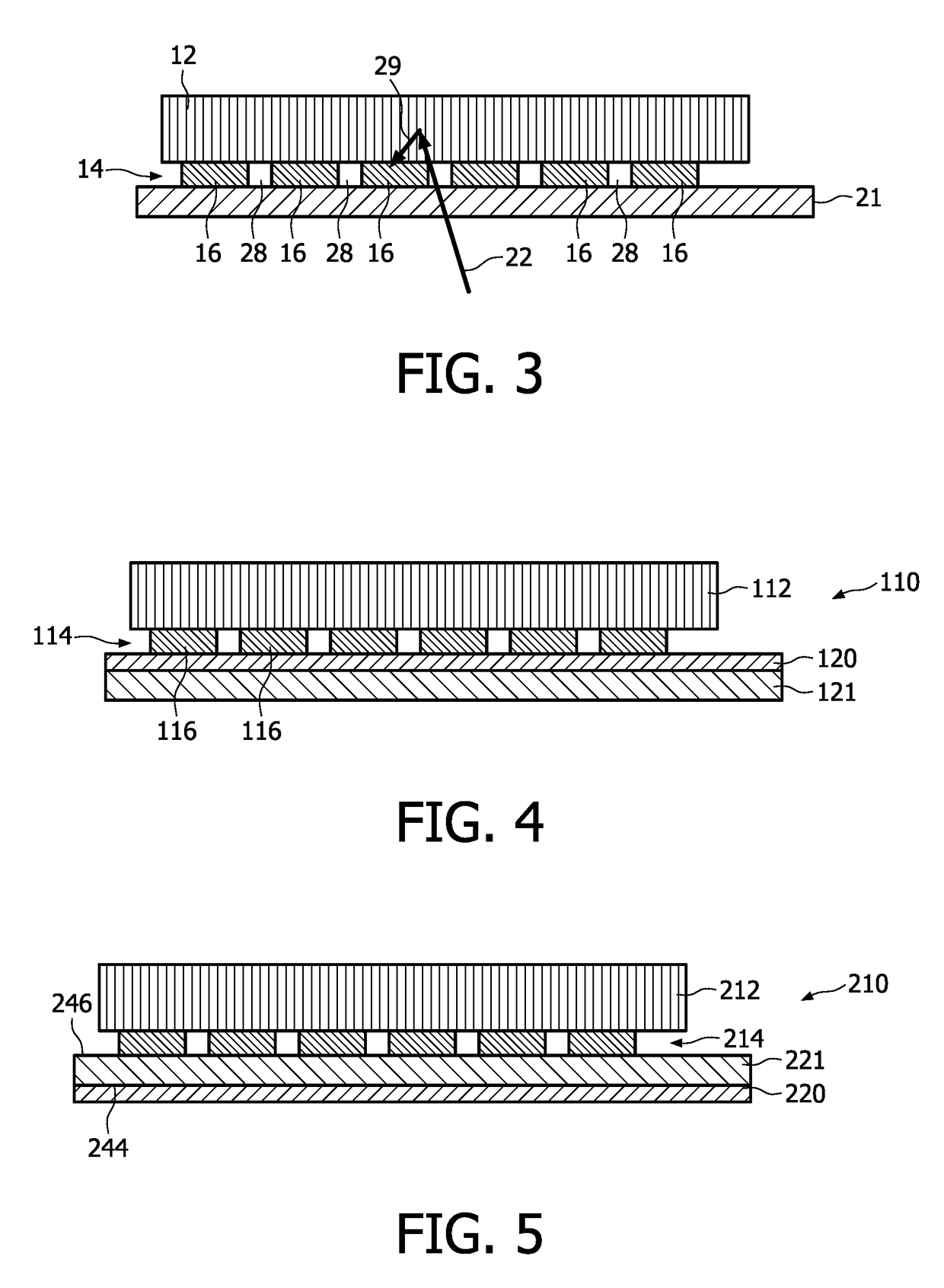Reducing trap effects in a scintillator by application of secondary radiation
- Summary
- Abstract
- Description
- Claims
- Application Information
AI Technical Summary
Benefits of technology
Problems solved by technology
Method used
Image
Examples
Embodiment Construction
[0035]With reference to the drawings, illustrative embodiments of the present invention will now be described in more detail. Throughout the detailed description of the embodiments, an exemplary example for the primary radiation is X-ray radiation and an example for the secondary radiation non-X-ray radiation, and in particular, UV radiation or blue light.
[0036]FIG. 1 shows a schematic view of an exemplary embodiment of an imaging apparatus 2. The imaging apparatus 2 comprises a primary radiation source 4 for irradiating an object 8 to be investigated with a primary radiation 6. The object 8 exemplarily shown in FIG. 1 may be a human being. However, the object 8 may also be an animal or any kind of substance. In the embodiment shown in FIG. 1, the primary radiation source 4 is an X-ray source and the primary radiation is X-ray radiation. However, the primary radiation may be any other radiation which is suitable for investigating the object 8.
[0037]After passing through the object 8...
PUM
 Login to View More
Login to View More Abstract
Description
Claims
Application Information
 Login to View More
Login to View More - R&D
- Intellectual Property
- Life Sciences
- Materials
- Tech Scout
- Unparalleled Data Quality
- Higher Quality Content
- 60% Fewer Hallucinations
Browse by: Latest US Patents, China's latest patents, Technical Efficacy Thesaurus, Application Domain, Technology Topic, Popular Technical Reports.
© 2025 PatSnap. All rights reserved.Legal|Privacy policy|Modern Slavery Act Transparency Statement|Sitemap|About US| Contact US: help@patsnap.com



